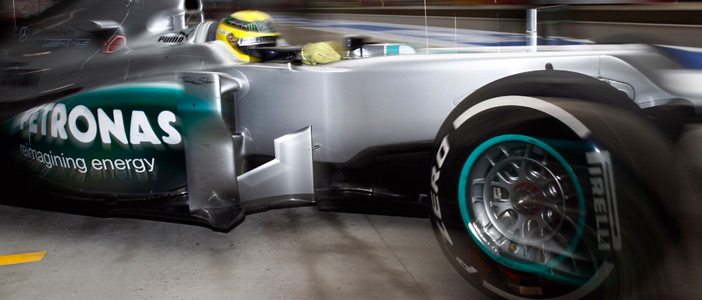The 2012 Chinese Grand Prix from a tire point of view

Tire strategy will be at the forefront of one of the most technically demanding races of the year, as Pirelli returns to Shanghai for the Chinese Grand Prix.
Last year, the top three finishers all used different strategies at a race that was not decided until the final lap – and with Pirelli having closed up the performance gaps between the compounds this year, the accent on strategy will now be even stronger.
Pirelli is bringing its P Zero White medium compound and P Zero Yellow soft compound tires to China: a circuit is well known for its fast and sweeping corners, as well as some long straights and heavy braking areas. All these factors make tire strategy extremely important, with a three-stop strategy having provided the pure speed needed to win the race last year.
The medium and the soft tires guarantee the best compromise between grip and performance on this circuit, but rain is a common occurrence as well, so the Cinturato Green intermediates and Cinturato Blue full wets could also make an appearance.
Unlike Malaysia, where the showers tend to be short and heavy, the rain in China is frequently light but long-lasting, making it ideal territory for the intermediate.
Pirelli will bring the same tyre combination as was nominated for Australia, the P Zero White medium and the P Zero Yellow soft, but this time they face a very different challenge.
The circuit layout in China tends to be more demanding than Albert Park, with a braking area at the end of the main straight for example where the cars go from 320kph to 68kph in less than 130 metres: a deceleration of 6G, which is one of the heaviest that the tyres face all year.
The lateral forces on the tyres, in the flowing mid-section of the lap, are the equivalent of 3G. The heavy braking that is a characteristic of China tends to put more strain on the front tyres than the rears. The fronts are also worked during turn one – which is almost a full circle – as the cars are relying purely on mechanical rather than aerodynamic grip.
The surface is medium-grip but less aggressive than Malaysia. The banking on turn 13 increases the strain on the tyre structure, as the contact patch can increase to three times its normal size.
Lewis Hamilton is the only two-time winner in China. Apart from him, there has been a different winner every year since the inaugural race in 2004, underlining the varied challenges of the Shanghai circuit.
Last year, Sebastian Vettel set the fast-ever lap in qualifying at the Shanghai circuit: 1m33.706s, using the 2011 P Zero Yellow soft tire.
